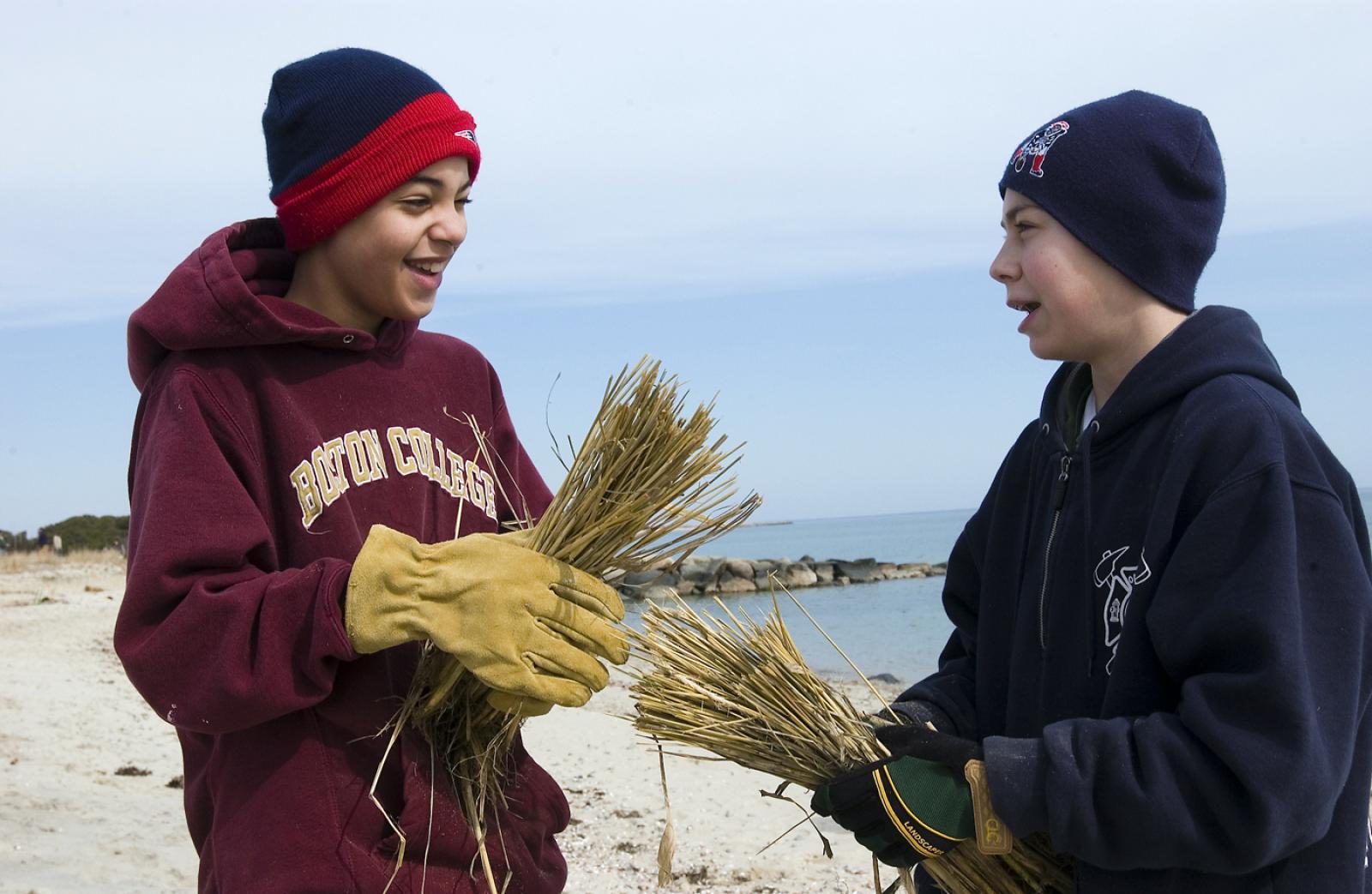Some Island beaches are getting plenty of attention.
Over a hundred volunteers gathered on the Oak Bluffs side of the Joseph Sylvia State Beach on Saturday morning to plant beach grass, part of an ongoing effort to stabilize one of the most popular beaches on the Island.
Meanwhile, the Army Corps of Engineers has agreed to come back to South Beach and to Chappaquiddick for a large-scale cleanup of leftover World War I and World War II ordnance. Their work will begin April 1, according to Chris Kennedy of The Trustees of Reservations.
Beach grass is one of the key ingredients necessary in protecting beaches from the ravages of high wind and surging waters. The beach grass planted on Saturday at State Beach is intended to help maintain the dunes and landscape at a time when beach erosion seems to be taking a greater toll around the Island.
Russell Smith, county manager, said he was deeply pleased by the spirit of the volunteers. More than 45,000 little plants were put in the sand, running along hundreds of feet of weak dunes.
On a mild day with springlike temperatures, eighth graders from the Oak Bluffs elementary school contributed to the work, a part of their required community service. Honor students from the regional high school were also present. Members of the Friends of Sengekontacket, a nonprofit organization committed to maintaining and protecting the pond and its environs, were there in force.
Mr. Smith said the county spent $5,000 on the beach grass, which came from the Cape Cod Organic Farm in Barnstable, but that the greater value was in the volunteer effort. Mr. Smith said they purchased 215 bundles, each bundle containing 300 plants. The effort was made easier by the division of labor. Some stood and used a metal device that puts holes in the sand called a dipple. Others followed behind, putting the plants into the sand. “We made great headway,” Mr. Smith said.
The county purchased 64,500 plants and Mr. Smith said they have yet to decide where to plant the rest. The work had the blessing of the Oak Bluffs conservation commission.
State Beach is one of the more stable beaches on the Island, but it is also one that has seen plenty of beach nourishment, meant to give the summer’s many visiting sunbathers enough room. The barrier beach that fronts Nantucket Sound on one side and Sengekontacket Pond on the other gets a lot of public use. The beach also insulates the much used road from the roar of rough ocean storms.
Meanwhile, erosion has taken its toll on South Beach in Edgartown and over at East Beach on Chappaquiddick. Mr. Kennedy said that the movement of sand has uncovered more military ordnance, enough to warrant a full scale cleanup beginning next month. Mr. Kennedy said last month a post World War I bomb was found, found and detonated. Mr. Kennedy is the Island’s Regional Supervisor for The Trustees of Reservations and oversees properties here and on Nantucket. Mr. Kennedy said a hired contractor will do underwater and surface surveying. The areas include South Beach, the waters around Cape Pogue near Little Neck, Shear Pen Pond and Drunkard’s Cove.
Mr. Kennedy noted that it may appear as though the South Beach area got hit hard by winter weather, but this is not unusual erosion for the area. The profile of the beach at this time of year is often referred to as the winter berm and it is a significant contrast to the summer beach profile. “When people go out to the beach in the winter, they think: Oh my goodness, this is catastrophic. We’ve lost more beach than ever before. But if they go back in May they will see that most of the beach has pretty much come back.
“The net effect is that we are losing beach, especially on the south side of the Vineyard. It is very slow, but we are losing beach,” Mr. Kennedy said.
Jo-Ann Taylor, coastal planner for the Martha’s Vineyard Commission, said State Beach is pretty stable, especially when compared to erosion at other areas around the Island.
State Beach is nourished naturally by sand migrating from the north and south.
Erosion is far more severe at South Beach, she said, where the beach is eroded as much as 10 feet a year. Squibnocket loses as much as a foot and a half per year.






Comments
Comment policy »